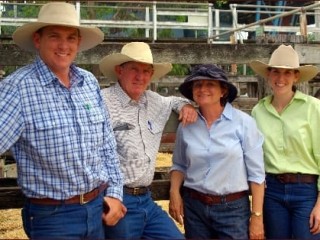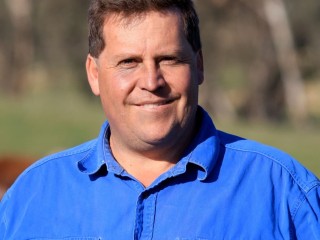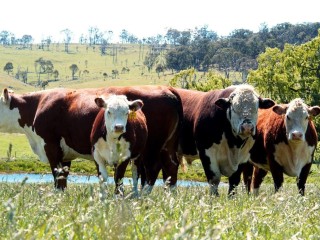Brahman perspective:
 The release 12 months ago of the CRC polled gene marker test for industry validation (see story “Strong result for Brahmans in poll gene marker test”) prompted a keen response from Brahman breeders, with 38 studs supplying 402 animals for testing.
The release 12 months ago of the CRC polled gene marker test for industry validation (see story “Strong result for Brahmans in poll gene marker test”) prompted a keen response from Brahman breeders, with 38 studs supplying 402 animals for testing.
One of these was the Streeter family of White Kangaroo Station, near Bowen in North Queensland.
Sarah Streeter said her family’s Fairy Springs Brahman Stud had been selecting for polledness for the past 15 years, mainly because they value the fact that polls require less labour at branding and there is less stress imposed on the animal.
“We recognised it as a beneficial trait to have in our herd, and I think dehorning will become more difficult in the near future because of welfare pressures,” Ms Streeter said.
The Streeters sell up to 100 bulls each year, with increasing auction premiums being evident for natural polls over the past six or so years.
The business also gets a lot of requests for polled bulls in its paddock herd bull sales.
Ms Streeter said the CRC marker test would be invaluable for the family’s stud selection operations and for buyers wanting rapid genetic progress for the polled trait in their herds.
“The frequency of the polled gene is still low in Brahmans, so anyone who wants to make genetic progress for polled cattle will value a homozygous poll. Without this test we have no confidence in whether an animal is a homozygote or a heterozygote,” she said.
“Based on Brahman results from the validation study, if a bull tests homozygous polled we can be confident that the result is about 90pc accurate in predicting his status. A homozygous polled bull mated to a predominantly horned cow herd will result in the progeny being scurred or polled in the first generation.”
Ms Streeter said Fairy Springs would definitely use the test as a marketing tool and intended to test all of its polled auction bulls, bulls retained for use in the herd and paddock sale bulls if requested.
“Up until now we couldn’t place any more value on one animal than another just on their polled appearance. But now I would certainly expect to see a premium on a homozygous polled bull.
Given that though, the animal still needs to be able to tick all the other boxes for reproductive soundness and have good carcase characteristics as well.”
The Streeter family provided animals used in early CRC research which led to the discovery of the poll gene.
Hereford perspective:
 It was good news for southern whiteface seedstock producer Ian Locke when he learned the Beef CRC was developing a polled gene marker test for beef cattle breeds widely used in Australia.
It was good news for southern whiteface seedstock producer Ian Locke when he learned the Beef CRC was developing a polled gene marker test for beef cattle breeds widely used in Australia.
The principal of Wirruna Poll Hereford stud in southern NSW, Mr Locke said he had always dipped into the horned Hereford gene pool because it represented around 50 percent of the total Hereford population.
“I find it hard to sell horned bulls within my client base, and they generally prefer non-scurred bulls, but I’ve always been able to use horned bulls and use the dominance of the polled genes to our advantage,” he said.
“However we’ve had to be careful not to increase the frequency of the horned gene too much and we’ve always wanted to identify carriers of horns.”
Mr Locke has been using the US-based Igenity horned/polled test for the past five years to test all sires used in the herd, plus donor cows used for embryo transfer programs.
He was able to offer about 80 test results from the US test, including samples and phenotypes for the test animals and their progeny, to help validate the CRC test. Results from both tests were 100 percent consistent.
“At this stage the CRC test is working a treat for what I want,” he said.
 Up until now about 15pc of Wirruna sale bulls have been tested. In its most recent sale, buyers competed strongly for a number of tested homozygous polled bulls, and the premium paid was sufficient to pay for the next calf crop’s tests.
Up until now about 15pc of Wirruna sale bulls have been tested. In its most recent sale, buyers competed strongly for a number of tested homozygous polled bulls, and the premium paid was sufficient to pay for the next calf crop’s tests.
Mr Locke believes the amalgamation of the Poll Hereford and Hereford societies has increased demand for homozygous polled bulls.
“The CRC test can give buyers the confidence to come in and buy a bull that will poll-up everything in their herds with horns.”
Mr Locke has just tested his entire drop of 180 weaner bulls. He said he would use the test for the next four to five years to determine the frequency of the polled gene in his herd and to minimise wastage associated with castrating horned bulls.
He is looking forward to having the results in-hand to decide how to use them strategically, for both breeding and marketing.
